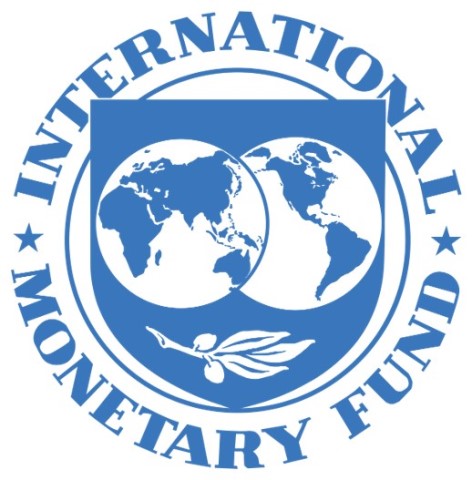- The IMF Executive Board concluded today the third review under the Extended Fund Facility (EFF) for Costa Rica, allowing for an immediate disbursement equivalent to about US$ 270 million.
- The IMF Executive Board also approved today the first arrangement under the newly established Resilience and Sustainability Facility (RSF) for about US$ 725 million to support Costa Rica’s ambitious climate change agenda and catalyze further financing.
- The Costa Rican authorities are taking important steps to strengthen their economic reform program. Monetary policy needs to continue to proactively respond to shocks. Fiscal consolidation should advance while strengthening social protection and fostering a more equitable economy.
WASHINGTON DC: The Executive Board of the International Monetary Fund (IMF) completed today the third review of Costa Rica’s economic reform program supported by the IMF’s extended arrangement under the Extended Fund Facility (EFF). Completion of this review makes available SDR 206.23 million (about US$ 270 million), bringing total disbursements under the arrangement to SDR 618.8 million (about US$ 810 million).
The Executive Board also approved today Costa Rica’s request for an arrangement under the Resilience and Sustainability Facility (RSF) for SDR 554.1 million (about US$ 725 million or 150 percent of quota). Costa Rica is the first country to access the RSF. The RSF duration will coincide with the period remaining under the EFF, disbursements under the RSF being contingent on the conclusion of relevant reviews under the EFF and implementation of scheduled reform measures.
Costa Rica’s three-year extended arrangement under the EFF was approved on March 1, 2021, in the amount of SDR 1.23749 billion (US$1.778 billion or 335 percent of quota in the IMF at the time of approval of the arrangement, see Press Release No. 21/53) and extended by five months on March 25, 2022 (see Press Release No. 22/91).
Following the Executive Board’s discussion on Costa Rica, Mr. Kenji Okamura, Deputy Managing Director and Acting Chair of the Board, issued the following statement:
“I am pleased that today Costa Rica will become the first user of the Resilience and Sustainability Facility (RSF), a testament to the country’s commitment to tackle climate change and pursue green growth.
“The Costa Rican authorities are taking important steps to strengthen their economic reform program. Nevertheless, global headwinds have started to slow economic activity amid elevated inflationary pressures, and the outlook remains subject to downside risks.
“The Central Bank of Costa Rica (BCCR) has responded proactively to the shocks facing the economy, adjusting monetary policy in line with its data-dependent and forward-looking approach. Against a difficult external environment, the BCCR is taking appropriate steps to strengthen its reserve position and deepen the FX market, while promoting exchange rate flexibility. Important legal amendments are underway to strengthen the BCCR’s governance, autonomy, and operational framework.
“Building on the strong fiscal performance to date, continued fiscal consolidation efforts is key, supported by planned reforms to increase the fairness and progressivity of taxes, improve the equity and efficiency of spending, and strengthen debt management. There is scope to re-examine the fiscal rule, while ensuring its essential role in containing spending and reducing debt is preserved.
“The authorities have appropriately provided targeted support to alleviate the impact of inflation on the most vulnerable. Advancing planned reforms to strengthen social protection alongside actions to incentivize formal employment, improve the quality of education, and boost female labor force participation will foster a more dynamic and equitable economy.
“The supervisory authorities’ continuous proactive monitoring of the financial system is important, accompanied by critical reforms to strengthen bank supervisory and regulatory powers, enhance the legal framework for bank resolution and deposit insurance and foster bank competition.
“The RSF arrangement will support Costa Rica’s ambitious agenda to build climate resilience and transition to a zero-carbon economy. The authorities’ access request under the RSF arrangement is underpinned by a strong reform package and will support ongoing initiatives to catalyze further financing from official and private partners.”
| Costa Rica: Selected Economic and Financial Indicators | |||||||||
| Projections | |||||||||
| 2019 | 2020 | 2021 | 2022 | 2023 | 2024 | 2025 | 2026 | 2027 | |
| Output and Prices | (Annual percentage change) | ||||||||
| Real GDP | 2.4 | -4.1 | 7.8 | 4.3 | 2.9 | 3.0 | 3.2 | 3.3 | 3.2 |
| GDP deflator | 2.6 | 0.2 | 2.1 | 5.4 | 4.4 | 3.5 | 3.1 | 3.0 | 3.0 |
| Consumer prices (period average) | 2.1 | 0.7 | 1.7 | 8.6 | 6.4 | 3.8 | 3.3 | 3.0 | 3.0 |
| Savings and Investment | (In percent of GDP) | ||||||||
| Gross domestic saving | 14.8 | 14.8 | 16.4 | 15.9 | 15.9 | 16.4 | 16.5 | 16.6 | 16.8 |
| Gross domestic investment | 16.1 | 15.8 | 19.7 | 20.5 | 20.2 | 20.0 | 19.8 | 19.8 | 19.7 |
| External Sector | |||||||||
| Current account balance | -1.3 | -1.0 | -3.3 | -4.6 | -4.3 | -3.6 | -3.4 | -3.2 | -2.9 |
| Trade balance | -6.0 | -2.7 | -4.4 | -7.3 | -7.4 | -7.2 | -7.0 | -7.0 | -6.9 |
| Financial account balance | -2.0 | -1.9 | -2.5 | -4.6 | -4.3 | -3.6 | -3.3 | -3.1 | -2.9 |
| Foreign direct investment, net | -4.2 | -2.6 | -4.8 | -5.1 | -4.9 | -4.9 | -4.8 | -4.8 | -4.7 |
| Gross international reserves (millions of U.S. dollars) | 8,937 | 7,232 | 6,921 | 8,241 | 8,695 | 9,359 | 9,530 | 10,261 | 10,891 |
| -as a percent of the ARA metric | 132.5 | 105.4 | 94.2 | 98.9 | 100.2 | 102.0 | 100.9 | 103.1 | 104.3 |
| External debt | 47.8 | 50.8 | 51.3 | 54.6 | 55.5 | 56.6 | 56.0 | 56.2 | 55.9 |
| Public Finances 1/ | |||||||||
| Central government’s primary balance | -2.6 | -3.8 | -0.3 | 1.1 | 1.3 | 1.7 | 2.0 | 2.2 | 2.3 |
| Central government’s overall balance | -6.7 | -8.4 | -5.1 | -4.3 | -4.0 | -3.2 | -2.6 | -2.3 | -1.9 |
| Central government debt | 56.4 | 67.2 | 68.2 | 67.2 | 66.3 | 65.8 | 64.8 | 63.3 | 61.8 |
| Money and Credit | |||||||||
| Credit to the private sector (percent change) | -2.3 | 3.4 | 3.7 | 6.2 | 5.0 | 5.8 | 6.5 | 6.8 | 6.8 |
| Monetary base 2/ | 7.1 | 8.3 | 7.9 | 7.3 | 7.2 | 7.3 | 7.3 | 7.3 | 7.4 |
| Broad money | 44.8 | 55.0 | 54.1 | 48.9 | 48.5 | 48.6 | 48.8 | 48.8 | 48.9 |
| Memorandum Items | |||||||||
| Nominal GDP (billions of colones) 3/ | 37,832 | 36,356 | 39,993 | 43,992 | 47,275 | 50,410 | 53,662 | 57,142 | 60,752 |
| Output gap (as a percent of potential GDP) | 0.2 | -3.4 | 0.1 | 0.8 | 0.3 | 0.0 | -0.1 | -0.1 | 0.0 |
| GDP per capita (US$) | 12,691 | 12,118 | 12,436 | 13,159 | 13,868 | 14,321 | 14,888 | 15,526 | 16,189 |
| Unemployment rate | 12.4 | 20.0 | 13.7 | 12.5 | 13.2 | 13.0 | 12.0 | 10.5 | 9.0 |
| Sources: Central Bank of Costa Rica, and Fund staff estimates. | |||||||||
| 1/ For comparison purposes, starting from 2019, central government figures include public entities that are consolidated under the central government from 2021 onwards as required by Law 9524. | |||||||||
| 2/ We use a narrower definition of the monetary base that includes only currency issued and required reserves. | |||||||||
| 3/ National account data reflect the revision of the benchmark year to 2017 for the chained volume measures, published in January 2021. |


